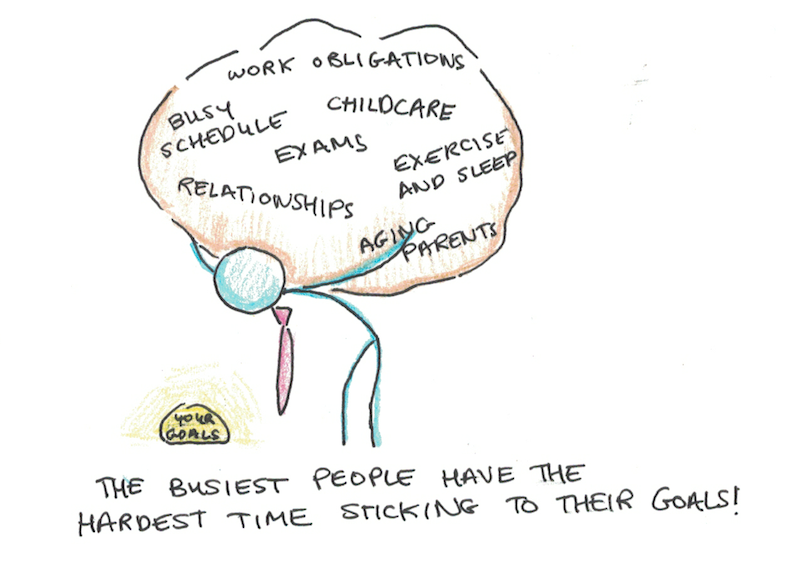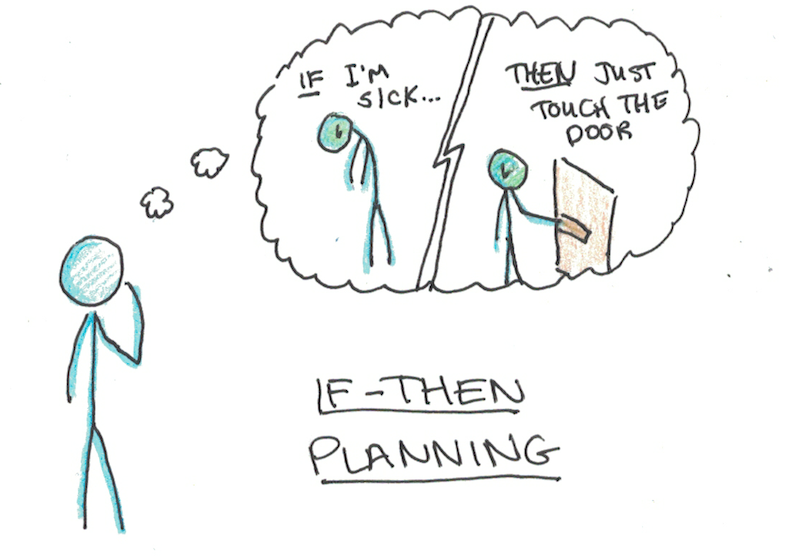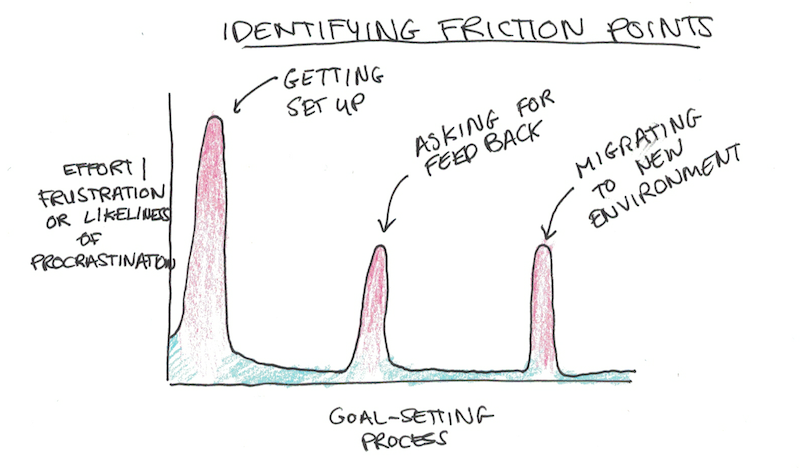This week, I’ve been writing lessons on closing the gap between your actions and intentions and making smarter decisions. This is all in preparation for the new session of my course, Make it Happen!
In case you missed those lessons, you can read them again here:
Lesson 1: Why it’s so hard to stick to your goals (and how to make it easy)
Lesson 2: The simple algorithm for making big life decisions
One of the biggest problems you face is being too busy to make progress on all the things you’d like to. In this lesson, I want to convince you to rethink how you approach your goals to get more done with less guilt and stress.
Why Busy People (Not Slackers) Have the Biggest Problems
In the first lesson, I talked about the action-intention gap that all of us possess. This is the difference between what we intend to do: learn a language, start a business, start getting enough sleep, and what actually happens.
The common stereotype is that the gap between action and intention is mostly a matter of willpower. Only lazy, undisciplined people don’t follow through on their commitments. If you’re a successful person with a busy life, decent career, family and friends, this isn’t your problem.
The reality is actually the complete opposite.

The more successful you get in life, and thus the more responsibilities you take on, the easier it is to allow your actions and intentions to drift apart.
- Do you have a demanding job? Then any goal you set will always be chipped away by your boss, colleagues and overtime.
- Do you have a loving family? Then kids getting sick, dance recitals and interruptions in childcare can complicate any goals you might set.
- Do you have a new business? Putting out fires, client requests and the pressures of growth all make sticking to your original plans much harder.
Sticking to your intentions is not just something people starting out in life need to learn. It’s a skill that requires constant refreshing and improvement, as life can make it harder for you to adjust and reach your priorities.
How Do You Make Plans When Life is Busy and Unpredictable?
Just as astronauts need to engineer spaceships to withstand the extreme conditions of outer space, you need to engineer your habits, systems and plans to meet your goals even when life doesn’t want to cooperate.
In my course, Make it Happen!, I’ll go over a lot of these tools you can use:
- Minimal habits, so you can keep momentum when you have zero time.
- Predefined review periods, so you don’t lose track.
- Value assessment worksheets, so you can know whether you’re sticking to your priorities, or just using excuses to avoid what really matters.
- Distinguishing maintenance and growth goals, and the focus they require.
- Front-loading plans to account for obstacles you can’t anticipate.
Today, however, I’d like to focus on just two:
- IF-THEN planning
- Identifying friction points
How IF-THEN Planning Keeps You On-Track
Imagine two scenarios. In one, you intend to exercise every day, but you get sick, skip a couple days, and you end up giving up. Oops.
Another, you also intend to exercise every day, but you anticipate that getting sick might happen. So you decide to set a threshold. If you’re feeling sick, all you have to do is touch the gym door, you don’t actually have to work out.
Now, you get sick, but because you anticipated this, when you miss your workout, everything is still going according to plan. Best of all, you planned for a reasonable method to maintain your momentum.

IF-THEN planning is this. You start by asking yourself about a bunch of things that could potentially (although not certainly) derail your plan. Getting sick, vacations, work travel, childcare difficulties. They might even be motivational rather than situational (what if you feel super anxious or unmotivated?)
Next, you tell yourself what you would do in each case. Fully imagine what it would be like to be in that situation and what a reasonable response would be. Sometimes it’s just to suck it up and forge ahead anyways. Other times, you might have an alternative to deal with your problem.
The power of this method is that by anticipating obstacles, when they do occur, you don’t stumble. Instead you follow your plan and continue forward. Busy people need to do IF-THEN planning more than most, because the number of things which can derail your goals is much higher.
How Identifying Friction Points Keeps You Moving
Go through your plan and try to identify any of the steps which will require effort—not in terms of time spent, but in how much motivation you’ll need to go forward. These are your barriers, and you need to keep a close eye on these points.
I’ll give an example: I once coached someone who was learning to draw comic books. She was good at putting in the work drawing, but she didn’t like asking for feedback, even though this was part of her original plan. Thus asking for feedback became a friction point, which made it harder for the plan to go forward.
My advice was to put the feedback first. If you pay attention to something unpleasant, you can focus your motivation towards getting through it. The biggest hiccups come when something is difficult, but you don’t fully recognize it as a friction point, so it drags down the entire project without you really being aware of it.
Think of how many people don’t learn a language because “they don’t know what book to buy?” This could be solved easily, but it often gets stuck because the person doesn’t recognize it as a friction point and give it the attention it deserves.

More Strategies for Busy People in Make it Happen!
Starting January 14, 2019, I’m going to be opening registration for Make it Happen! for a new session. For those who join us, we’ll spend the following six weeks giving daily lessons to help you set goals, make tough decisions and create plans that actually work.
In the next lesson, I’m going to talk about to keep the past from defining your future.

 I'm a Wall Street Journal bestselling author, podcast host, computer programmer and an avid reader. Since 2006, I've published weekly essays on this website to help people like you learn and think better. My work has been featured in The New York Times, BBC, TEDx, Pocket, Business Insider and more. I don't promise I have all the answers, just a place to start.
I'm a Wall Street Journal bestselling author, podcast host, computer programmer and an avid reader. Since 2006, I've published weekly essays on this website to help people like you learn and think better. My work has been featured in The New York Times, BBC, TEDx, Pocket, Business Insider and more. I don't promise I have all the answers, just a place to start.